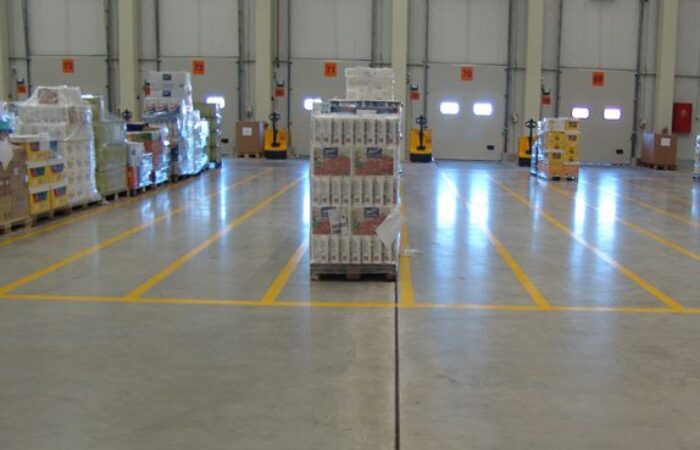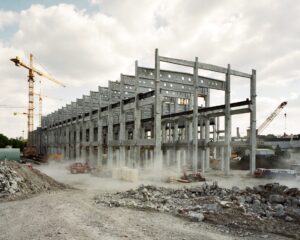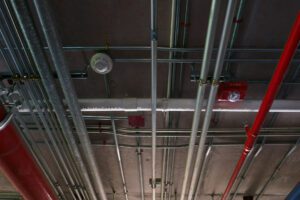The Art of Concrete Flooring: A Comprehensive Guide to Hiring the Best Contractor in KSA
Book Chapters:
Introduction to Concrete Flooring: Benefits and Applications
Understanding the Role of a Concrete Flooring Contractor
Choosing the Right Concrete Flooring Contractor for Your Project
Factors to Consider When Selecting a Concrete Flooring Contractor
How to Evaluate a Concrete Flooring Contractor’s Experience and Expertise
The Importance of Communication in the Concrete Flooring Installation Process
How to Get a Concrete Flooring Contractor’s Quote and Estimate
Concrete Flooring Installation Process: Preparation, Pouring, and Finishing
Types of Concrete Finishes: Stained, Polished, and Sealed
Maintaining Your Concrete Flooring: Tips and Best Practices
Common Mistakes to Avoid When Working with a Concrete Flooring Contractor
How to Resolve Issues and Disputes with Your Concrete Flooring Contractor
Trends and Innovations in Concrete Flooring Design and Technology
Future of Concrete Flooring in KSA: Opportunities and Challenges
Conclusion: Final Thoughts on Hiring a Concrete Flooring Contractor in KSA
Book Introduction:
Concrete flooring has become an increasingly popular choice among homeowners and businesses in KSA due to its durability, low maintenance, and versatility. However, installing concrete flooring requires the expertise of a professional contractor who can ensure that the job is done right the first time.
In this comprehensive guide, we aim to provide you with all the information you need to hire the best concrete flooring contractor in KSA. From understanding the benefits and applications of concrete flooring to choosing the right contractor for your project and maintaining your concrete floors, we will cover every aspect of the concrete flooring installation process.
We will also provide you with insights into the latest trends and innovations in concrete flooring design and technology, as well as the challenges and opportunities for the future of concrete flooring in KSA.
Chapter 1: Introduction to Concrete Flooring: Benefits and Applications
Concrete flooring has become a popular choice for both residential and commercial applications due to its numerous benefits. Concrete floors are durable, easy to maintain, and resistant to stains, scratches, and impact. They also offer a variety of design options, from polished and stained to stamped and textured.
In this chapter, we will explore the benefits and applications of concrete flooring in detail. We will also discuss the various types of concrete flooring available, including polished, stained, and sealed.
Chapter 2: Understanding the Role of a Concrete Flooring Contractor
A concrete flooring contractor plays a crucial role in ensuring the success of your concrete flooring project. They are responsible for preparing the site, pouring the concrete, and finishing the surface to achieve the desired look and functionality.
In this chapter, we will discuss the responsibilities of a concrete flooring contractor and the qualifications and skills they should possess. We will also explain the importance of hiring a licensed and insured contractor for your project.
Chapter 3: Choosing the Right Concrete Flooring Contractor for Your Project
Choosing the right concrete flooring contractor can be a daunting task, especially if you are not familiar with the industry. However, by doing your research and asking the right questions, you can find a contractor who meets your specific needs and budget.
In this chapter, we will provide you with a step-by-step guide on how to choose the right concrete flooring contractor for your project. We will also discuss the importance of checking references, reviewing their portfolio, and getting a written estimate.
Chapter 4: Factors to Consider When Selecting a Concrete Flooring Contractor
When selecting a concrete flooring contractor, there are several factors that you should consider to ensure that you are making an informed decision. These factors include the contractor’s experience, reputation, pricing, and communication skills.
In this chapter, we will discuss each of these factors in detail and provide
Chapter 5: How to Evaluate a Concrete Flooring Contractor’s Experience and Expertise
Experience and expertise are crucial factors when choosing a concrete flooring contractor. You want to work with a contractor who has a proven track record of successfully completing projects similar to yours. In this chapter, we will discuss how to evaluate a contractor’s experience and expertise, including checking their portfolio, reading reviews and testimonials, and asking for references.
Chapter 6: The Importance of Communication in the Concrete Flooring Installation Process
Clear communication is essential in any construction project, and concrete flooring is no exception. A good contractor should be able to communicate with you throughout the installation process, from the initial consultation to the final walkthrough. In this chapter, we will discuss the importance of communication in the concrete flooring installation process and provide tips for maintaining open lines of communication with your contractor.
Chapter 7: How to Get a Concrete Flooring Contractor’s Quote and Estimate
Getting a concrete flooring contractor’s quote and estimate is an important step in the hiring process. A good contractor should provide you with a detailed estimate that includes all the costs associated with your project. In this chapter, we will discuss how to get a concrete flooring contractor’s quote and estimate, including what to look for in the estimate and how to compare quotes from different contractors.
Chapter 8: Concrete Flooring Installation Process: Preparation, Pouring, and Finishing
The concrete flooring installation process can be divided into three main stages: preparation, pouring, and finishing. In this chapter, we will provide a detailed overview of each stage, including what to expect and what to look for in a good contractor. We will also discuss the importance of site preparation and the different techniques used for pouring and finishing concrete floors.
Chapter 9: Types of Concrete Finishes: Stained, Polished, and Sealed
Concrete floors can be finished in a variety of ways, each with its own unique look and benefits. In this chapter, we will discuss the three most popular types of concrete finishes: stained, polished, and sealed. We will explore the benefits and drawbacks of each finish and provide tips for choosing the right finish for your project.
Chapter 10: Maintaining Your Concrete Flooring: Tips and Best Practices
Concrete floors are relatively low maintenance, but they still require some care to keep them looking their best. In this chapter, we will provide tips and best practices for maintaining your concrete flooring, including how to clean and protect your floors and how to prevent damage from heavy foot traffic or furniture.
Chapter 11: Common Mistakes to Avoid When Working with a Concrete Flooring Contractor
Working with a concrete flooring contractor can be challenging, especially if you are unfamiliar with the industry. In this chapter, we will discuss some common mistakes to avoid when working with a concrete flooring contractor, including failing to do your research, not setting clear expectations, and not communicating effectively with your contractor.
Chapter 12: How to Resolve Issues and Disputes with Your Concrete Flooring Contractor
Disputes with your concrete flooring contractor can be frustrating and costly. In this chapter, we will discuss how to resolve issues and disputes with your contractor, including steps to take before and during the project and how to file a complaint if necessary.
Chapter 13: Trends and Innovations in Concrete Flooring Design and Technology
Concrete flooring design and technology are constantly evolving, with new trends and innovations emerging all the time. In this chapter, we will discuss the latest trends and innovations in concrete flooring design and technology, including eco-friendly options, new finishes, and decorative concrete.
Chapter 14: Future of Concrete Flooring in KSA: Opportunities and Challenges
Concrete flooring is likely to continue growing in popularity in KSA in the coming years. In this chapter, we will explore the opportunities and challenges facing the future of concrete flooring in KSA, including the impact
of new technologies and materials, changing consumer preferences, and increasing competition in the industry.
Chapter 15: Choosing the Right Concrete Flooring Contractor for Your Project
In this final chapter, we will tie together all the information covered in this book to help you choose the right concrete flooring contractor for your project. We will provide a checklist of important factors to consider, including experience, expertise, communication skills, reputation, and price. By following the tips and advice in this book, you can feel confident in your ability to find the best contractor for your concrete flooring project in KSA.
Concrete flooring is a popular choice for many different types of projects, from industrial warehouses to residential homes. In KSA, there are many contractors and companies offering concrete flooring services, but not all of them are created equal. Choosing the right contractor for your project can be a daunting task, especially if you are not familiar with the industry. That’s why we have created this book, to provide you with all the information you need to make an informed decision when choosing a concrete flooring contractor in KSA.
In this book, we will cover the basics of concrete flooring, including the types of concrete, finishes, and decorative options available. We will also discuss the benefits and drawbacks of concrete flooring compared to other types of flooring materials. Furthermore, we will delve into the factors that influence the cost of concrete flooring, such as the size of the project, the complexity of the design, and the type of finish desired.
In addition, we will provide tips on how to find and choose the right contractor for your project, including how to evaluate a contractor’s experience, expertise, communication skills, reputation, and price. We will also provide a checklist of important factors to consider when choosing a contractor for your concrete flooring project in KSA.
Whether you are a homeowner, business owner, or contractor yourself, this book is designed to be a comprehensive guide to concrete flooring in KSA. By reading this book, you will gain the knowledge and confidence you need to make informed decisions about your concrete flooring project and choose the right contractor to bring your vision to life.
Chapter 1: Introduction to Concrete Flooring
Concrete is a versatile material that has been used for flooring for centuries. It is made from a mixture of cement, water, and aggregates, such as sand, gravel, or crushed stone. The mixture is poured into a mold or form and allowed to harden and cure, resulting in a solid and durable surface.
Concrete flooring can be used in a variety of settings, from residential homes to commercial buildings, warehouses, and industrial facilities. It is a popular choice for many reasons, including its durability, affordability, and versatility. Concrete flooring can be customized with different finishes, colors, and decorative options to suit any design style.
In this chapter, we will explore the basics of concrete flooring, including the different types of concrete used for flooring, the advantages and disadvantages of concrete flooring, and the different finishes and decorative options available. We will also discuss the importance of proper installation and maintenance to ensure the longevity and durability of your concrete flooring.
Chapter 2: Types of Concrete Used for Flooring
Not all concrete is created equal, and the type of concrete used for flooring will depend on the specific needs of the project. There are three main types of concrete used for flooring: standard concrete, high-strength concrete, and self-leveling concrete.
Standard concrete is the most common type of concrete used for flooring. It is a mixture of cement, water, and aggregates, with a compressive strength of 2500 to 4000 psi. Standard concrete can be used for both interior and exterior flooring projects, but it may require additional finishes to achieve the desired look.
High-strength concrete is a type of concrete with a compressive strength of 6000 to 10,000 psi. It is often used in industrial settings, such as warehouses and factories, where heavy machinery and equipment are present. High-strength concrete can also be used in residential and commercial settings where the flooring will be subject to heavy traffic.
Self-leveling concrete is a type of concrete that is mixed with polymers and other additives to create a smooth and level surface. It is often used in commercial settings where a level surface is necessary, such as hospitals, schools, and retail spaces. Self-leveling concrete can also be used in residential settings for a sleek and modern look.
Chapter 3: Advantages and Disadvantages of Concrete Flooring
Concrete flooring has many advantages, but it also has a few drawbacks that should be considered before choosing it for your project. One of the main advantages of concrete flooring is its durability. Concrete is a strong and durable material that can withstand heavy foot traffic, spills, and stains. It is also easy to clean and maintain, making it a popular choice for high-traffic areas.
Another advantage of concrete flooring is its affordability. Concrete is a relatively inexpensive material compared to other flooring options, such as hardwood or tile. Concrete flooring can also be customized with different finishes and decorative options to create a unique and personalized look.
However, concrete flooring also has a few drawbacks. One of the main drawbacks is its hardness. Concrete flooring can be uncomfortable to stand on for long periods, and it can also be noisy. Concrete flooring also tends to be cold, which can be a problem in colder climates.
Chapter 4: Finishes and Decorative Options for Concrete Flooring
One of the benefits of concrete flooring is its versatility when it comes to finishes and decorative options. Concrete flooring can be customized with a variety of finishes, including polished, stained, and stamped concrete.
Polished concrete is a popular finish for concrete flooring. It involves grinding the surface of the concrete with progressively finer diamond grinding tools to create a smooth and shiny surface. Polished concrete can be customized with different levels of sheen, from matte to high gloss.
Stained concrete is another popular finish for concrete flooring. It involves applying a stain to the surface of the concrete to create a variegated and translucent effect. Stained concrete can be customized with a variety of colors and patterns.
Stamped concrete is a decorative option that involves pressing a pattern or texture into the surface of the concrete. Stamped concrete can be customized with a variety of patterns, including brick, stone, and tile.
Chapter 5: Cost of Concrete Flooring
The cost of concrete flooring will depend on several factors, including the size of the project, the complexity of the design, and the type of finish desired. On average, concrete flooring costs between $2 and $15 per square foot, including installation and finishing.
Additional costs may include the cost of removing and disposing of existing flooring, preparing the subfloor, and any additional customization, such as staining or stamping. It is important to get a detailed estimate from your contractor before starting your project to avoid any unexpected costs.
Chapter 6: Finding the Right Contractor
Finding the right contractor is crucial when it comes to concrete flooring. You want to make sure you hire a contractor who is experienced in working with concrete and can provide quality workmanship.
One way to find a contractor is through word of mouth. Ask friends, family members, and colleagues if they have worked with a concrete flooring contractor in the past and if they would recommend them.
You can also search online for contractors in your area. Look for contractors who specialize in concrete flooring and have positive reviews and ratings from previous customers.
When interviewing potential contractors, be sure to ask for references and photos of their previous work. Ask about their experience with concrete flooring and their process for installation and finishing. Make sure the contractor is licensed and insured and has a warranty or guarantee for their work.
It is also important to get a detailed written estimate from the contractor before starting the project. The estimate should include the cost of materials, labor, and any additional customization, as well as a timeline for the project.
By taking the time to find the right contractor, you can ensure that your concrete flooring project is completed to your satisfaction and will last for years to come.
Chapter 2: Types of Concrete Flooring
Concrete is a versatile material that can be used for a variety of flooring options. Here are some of the most common types of concrete flooring:
Polished Concrete Flooring – Polished concrete is achieved by grinding the surface of the concrete with progressively finer diamond pads until a smooth, shiny surface is achieved. This type of flooring is very durable and requires little maintenance, making it a popular choice for commercial and industrial applications.
Stained Concrete Flooring – Staining concrete involves applying a chemical stain to the surface of the concrete, which reacts with the minerals in the concrete to create a unique color and pattern. This type of flooring is often used for decorative purposes in residential and commercial settings.
Epoxy Flooring – Epoxy is a type of resin that is applied to the surface of the concrete to create a strong, durable coating. This type of flooring is often used in industrial and commercial settings where heavy machinery and foot traffic are common.
Stamped Concrete Flooring – Stamped concrete involves creating a pattern or texture on the surface of the concrete using stamps or other tools. This type of flooring can mimic the look of other materials such as stone or wood and is often used for decorative purposes in outdoor spaces.
Acid Stained Concrete Flooring – Acid staining involves applying an acid solution to the surface of the concrete, which reacts with the minerals in the concrete to create a unique color and pattern. This type of flooring is often used in residential and commercial settings for its unique and artistic appearance.
When choosing a type of concrete flooring, consider the intended use of the space, the desired aesthetic, and the level of maintenance required. Each type of concrete flooring has its own advantages and disadvantages, so it is important to research and consult with a professional before making a final decision.
Chapter 3: Benefits of Concrete Flooring
Concrete flooring has many benefits that make it a popular choice for both residential and commercial applications. Here are some of the key benefits of concrete flooring:
Durability – Concrete is an extremely durable material that can withstand heavy foot traffic, furniture, and equipment without showing signs of wear and tear. With proper installation and maintenance, concrete flooring can last for decades.
Low Maintenance – Concrete flooring requires very little maintenance, making it a great option for busy households or commercial spaces. Regular cleaning with a mop and mild cleaner is usually all that is required to keep concrete flooring looking its best.
Versatility – Concrete flooring can be customized in a variety of ways to fit your specific needs and preferences. It can be stained, polished, stamped, or painted to create a unique look that complements your decor.
Sustainability – Concrete is a sustainable material that is made from natural materials and can be recycled at the end of its useful life. This makes it a more eco-friendly option compared to other flooring materials that require more resources to produce and dispose of.
Cost-effective – Concrete flooring is generally more affordable than other flooring materials such as hardwood or tile. Additionally, its durability and low maintenance requirements make it a cost-effective option in the long run.
Health Benefits – Concrete flooring does not trap allergens and dust like carpet does, making it a better option for people with allergies or respiratory issues. It is also resistant to mold and mildew, which can improve indoor air quality.
These benefits make concrete flooring a practical and attractive option for a wide range of applications. Whether you are renovating your home or updating a commercial space, concrete flooring is a durable, low-maintenance option that can add value and style to any environment.
Chapter 4: Factors to Consider When Choosing a Concrete Flooring Contractor
When choosing a concrete flooring contractor, there are several factors to consider to ensure that you get the best quality work at a fair price. Here are some key factors to consider:
Experience – Look for a contractor with experience in concrete flooring installation and maintenance. Ask for references and check their portfolio to see examples of their past work.
Reputation – A contractor’s reputation is important when choosing a contractor. Look for online reviews and testimonials from past clients to get an idea of their level of professionalism and quality of work.
Licenses and Insurance – Ensure that the contractor you choose is licensed and insured. This protects you in case of accidents or damages during the project.
Pricing – Get quotes from several contractors and compare them to ensure you are getting a fair price. Be wary of prices that are significantly lower than other contractors, as this may indicate lower quality work or hidden costs.
Communication – A good contractor should be able to communicate clearly and effectively with you throughout the project. They should be responsive to your questions and concerns and keep you informed of any changes or delays.
Warranty – Ask about the contractor’s warranty or guarantee for their work. A reputable contractor should stand behind their work and offer a warranty on materials and workmanship.
By considering these factors when choosing a concrete flooring contractor, you can ensure that you get the best quality work at a fair price. Don’t be afraid to ask questions and do your research to find a contractor that meets your specific needs and preferences.
Chapter 5: Preparing for Concrete Flooring Installation
Proper preparation is key to ensuring a successful concrete flooring installation. Here are some steps to take to prepare for concrete flooring installation:
Choose the Right Type of Concrete – There are different types of concrete to choose from depending on your specific needs and preferences. Consider factors such as durability, slip resistance, and color when choosing your concrete.
Plan the Layout – Plan the layout of your concrete flooring to ensure that it fits your space and meets your functional needs. Consider factors such as traffic flow, furniture placement, and the overall aesthetic of your space.
Prepare the Subfloor – The subfloor must be clean, level, and free of debris before the concrete is poured. If the subfloor is not level, the concrete may crack or settle unevenly.
Remove Existing Flooring – If you have existing flooring, it must be removed before the concrete can be poured. This includes any adhesives, coatings, or tiles.
Consider Adding Insulation – Adding insulation beneath your concrete flooring can improve energy efficiency and reduce noise.
Allow for Proper Curing Time – Concrete takes time to cure properly. Be sure to allow enough time for the concrete to cure before using the space or placing heavy furniture on the surface.
By following these steps, you can ensure that your concrete flooring installation goes smoothly and provides the durability and style you need. Be sure to work with a reputable contractor and follow their specific instructions for preparation and installation.
Chapter 6: The Installation Process for Concrete Flooring
Concrete flooring installation involves several steps to ensure a successful and long-lasting result. Here is an overview of the installation process for concrete flooring:
Preparation – Before the installation process begins, the subfloor must be prepared by removing any existing flooring, cleaning the surface, and leveling it if necessary. The contractor may also add insulation or moisture barriers as needed.
Pouring the Concrete – Once the subfloor is prepared, the concrete is mixed and poured onto the surface. The contractor will spread the concrete evenly and smooth out any bumps or rough spots.
Finishing – After the concrete is poured, the contractor will use a trowel to smooth out the surface and ensure that it is level. They may also use a stamp or other tool to create a decorative finish or pattern on the surface.
Curing – The concrete must be allowed to cure properly before it can be used. The curing process can take several days or even weeks depending on the thickness of the concrete and the weather conditions.
Sealing – Once the concrete is cured, the contractor will apply a sealant to protect the surface from damage and stains. This may involve applying a coat of epoxy or another type of sealant depending on the specific needs of the space.
By following these steps and working with a skilled and experienced contractor, you can ensure that your concrete flooring installation goes smoothly and provides the durability and style you need for your space. Be sure to follow the contractor’s specific instructions for maintenance and care to keep your concrete flooring looking its best for years to come.
Chapter 7: Maintenance and Care for Concrete Flooring
Proper maintenance and care are essential to keeping your concrete flooring looking its best and prolonging its lifespan. Here are some tips for maintaining and caring for your concrete flooring:
Clean Regularly – Regular cleaning is essential to keeping your concrete flooring looking its best. Use a broom or dust mop to remove debris and dirt from the surface, and mop with a mild cleaner as needed.
Avoid Harsh Chemicals – Harsh chemicals can damage the surface of your concrete flooring, so it is important to avoid using them. Instead, use a mild cleaner and warm water to clean the surface.
Remove Stains Promptly – If you spill something on your concrete flooring, be sure to clean it up promptly to avoid staining. Use a mild cleaner and warm water to remove the stain.
Use Mats and Rugs – Placing mats and rugs in high-traffic areas can help protect the surface of your concrete flooring from wear and tear.
Reseal as Needed – Over time, the sealant on your concrete flooring may wear down, so it is important to reseal the surface as needed to protect it from damage.
By following these tips, you can ensure that your concrete flooring looks great and lasts for years to come. Be sure to work with a reputable contractor for installation and follow their specific instructions for maintenance and care. With proper care, your concrete flooring can be a stylish and durable addition to your home or business.
Chapter 8: Pros and Cons of Concrete Flooring
Like any flooring option, concrete flooring has its advantages and disadvantages. Here are some of the pros and cons to consider when deciding if concrete flooring is right for your space:
Pros:
Durability – Concrete is an incredibly durable material that can withstand heavy traffic, impacts, and even moisture.
Low Maintenance – Once installed and properly sealed, concrete flooring requires very little maintenance beyond regular cleaning.
Versatility – Concrete flooring can be customized with different colors, finishes, and patterns to suit a wide range of styles and design preferences.
Eco-Friendly – Concrete flooring is often made from natural and locally-sourced materials, making it an eco-friendly flooring option.
Cons:
Cold – Concrete can be a cold material, which may not be ideal for some spaces or climates.
Hard – Concrete can be hard and unforgiving, which may not be comfortable for standing or walking for long periods.
Initial Cost – The initial cost of concrete flooring installation can be higher than some other flooring options.
Installation Time – Concrete flooring installation can take longer than other flooring options due to the curing time required.
By weighing the pros and cons of concrete flooring and considering your specific needs and preferences, you can determine if it is the right flooring option for your space. Be sure to work with a reputable and experienced contractor to ensure a successful installation and enjoy the benefits of your new concrete flooring for years to come.
Chapter 9: Concrete Flooring in Commercial Spaces
Concrete flooring is becoming an increasingly popular option for commercial spaces due to its durability, versatility, and low maintenance requirements. Here are some of the benefits of using concrete flooring in commercial spaces:
Durability – Concrete is one of the most durable flooring options available, making it ideal for commercial spaces that experience heavy traffic, impacts, and wear and tear.
Low Maintenance – Once properly sealed, concrete flooring requires very little maintenance beyond regular cleaning, making it a low-maintenance option for busy commercial spaces.
Customizable – Concrete flooring can be customized with different colors, finishes, and patterns to suit a wide range of commercial design needs and branding.
Sustainable – Concrete is often made from natural and locally-sourced materials, making it an eco-friendly and sustainable flooring option for commercial spaces.
Cost-Effective – While the initial cost of installation may be higher than some other flooring options, the long-term durability and low maintenance requirements of concrete flooring make it a cost-effective choice for commercial spaces.
Concrete flooring is well-suited to a variety of commercial spaces, including retail stores, restaurants, offices, and more. When considering concrete flooring for your commercial space, be sure to work with an experienced and reputable contractor to ensure a successful installation that meets your specific needs and requirements.
Chapter 10: Maintaining Your Concrete Flooring
While concrete flooring is known for its durability and low maintenance requirements, it still requires some care to keep it looking its best. Here are some tips for maintaining your concrete flooring:
Regular Cleaning – Sweeping or vacuuming your concrete flooring regularly can help prevent dirt and debris from building up and scratching the surface. Use a damp mop or mild cleaner as needed to keep your flooring clean.
Avoid Harsh Cleaners – Avoid using harsh chemicals or abrasive cleaners on your concrete flooring, as they can damage the surface and cause discoloration.
Use Mats and Rugs – Placing mats and rugs in high-traffic areas and near entrances can help protect your concrete flooring from dirt, debris, and moisture.
Address Stains Promptly – If you notice a stain on your concrete flooring, it’s important to address it promptly to prevent it from setting in. Use a mild cleaner and a soft brush to gently scrub the stain, and avoid using harsh chemicals or abrasive materials.
Reseal Your Flooring – Depending on the level of foot traffic and wear and tear, you may need to reseal your concrete flooring every 1-3 years. This will help protect the surface from moisture and stains, and keep it looking its best.
By following these tips for maintaining your concrete flooring, you can keep it looking great for years to come. Be sure to consult with your concrete flooring contractor for specific care instructions and recommendations based on your unique flooring and usage.
Chapter 11: Repairs and Restoration for Concrete Flooring
Despite its durability, concrete flooring can still experience wear and tear over time. Whether it’s from heavy foot traffic, impacts, or exposure to the elements, damage to your concrete flooring can be unsightly and potentially dangerous. Here are some tips for repairing and restoring your concrete flooring:
Identify the Damage – Before you can repair your concrete flooring, you need to identify the type and extent of the damage. Common types of damage include cracks, chips, and discoloration.
Determine the Cause – Once you’ve identified the damage, you need to determine the cause. This will help you determine the best course of action for repairing and preventing future damage. For example, if your concrete flooring is cracking due to foundation issues, repairing the surface won’t address the underlying problem.
Choose the Right Repair Method – Depending on the type and extent of the damage, there are different methods for repairing concrete flooring. For minor damage, such as small cracks or chips, you can use a patching compound. For larger cracks or more extensive damage, you may need to resurface your flooring.
Hire a Professional – While minor repairs can be done yourself, more extensive repairs and restoration should be done by a professional. A professional concrete flooring contractor has the experience, tools, and materials to properly repair and restore your flooring.
By taking these steps to repair and restore your concrete flooring, you can extend its lifespan and maintain its appearance and functionality. Be sure to consult with your concrete flooring contractor for specific repair and restoration recommendations based on your unique flooring and situation.
Chapter 12: Maintaining Your Concrete Flooring
Proper maintenance is key to extending the lifespan and appearance of your concrete flooring. Here are some tips for maintaining your concrete flooring:
Regular Cleaning – Regularly cleaning your concrete flooring is important to remove dirt, debris, and stains that can damage the surface. Sweep or vacuum your flooring regularly, and mop with a mild detergent and water as needed.
Sealing – Sealing your concrete flooring helps to protect it from moisture and stains. A high-quality sealant should be applied every few years to maintain the protection.
Avoid Harsh Chemicals – Harsh chemicals can damage your concrete flooring, so avoid using acid-based cleaners or harsh solvents.
Address Stains Immediately – If you spill something on your concrete flooring, address the stain immediately. Blot the area with a clean cloth and use a mild detergent and water to clean the area.
Protect from Heavy Loads – Heavy loads can damage your concrete flooring, so avoid dragging heavy furniture or equipment across the surface.
By following these maintenance tips, you can keep your concrete flooring in top condition and avoid the need for costly repairs and restoration. Consult with your concrete flooring contractor for additional tips and recommendations for maintaining your specific flooring.
Chapter 13: Repairing Your Concrete Flooring
Despite proper maintenance, your concrete flooring may need repairs from time to time. Here are some common issues and their corresponding solutions:
Cracks – Cracks can occur in concrete flooring due to a variety of reasons, including settling, heavy loads, or temperature changes. Small cracks can be filled with a concrete patching compound, while larger cracks may require professional repair.
Spalling – Spalling occurs when the surface of the concrete begins to flake or chip away, exposing the aggregate underneath. This can be caused by freeze-thaw cycles, moisture, or salt damage. Spalling can be repaired by removing the damaged area and applying a new layer of concrete.
Surface Scaling – Surface scaling occurs when the top layer of the concrete begins to flake away, exposing the aggregate underneath. This can be caused by improper finishing or exposure to de-icing salts. Surface scaling can be repaired by removing the damaged area and applying a new layer of concrete.
Discoloration – Discoloration can occur due to exposure to UV rays, chemical spills, or staining. Discoloration can be remedied by acid staining or applying a concrete coating.
Uneven Surface – An uneven surface can be caused by settling or improper installation. This can be remedied by grinding down high spots or filling in low spots with a self-leveling compound.
If you are unsure about how to repair your concrete flooring or if the damage is extensive, it is best to consult with a professional concrete flooring contractor. They can provide expert guidance on the best course of action to repair and restore your flooring to its original condition.
Chapter 14: Maintaining Your Concrete Flooring
Proper maintenance is key to keeping your concrete flooring in top condition for years to come. Here are some tips to help you maintain your flooring:
Clean regularly – Regular cleaning helps to prevent the buildup of dirt, dust, and other debris that can damage the surface of your concrete flooring. Use a soft-bristled brush or a mop to clean the surface regularly.
Avoid harsh chemicals – Harsh chemicals can damage the surface of your concrete flooring. Avoid using bleach, ammonia, or acidic cleaners.
Use a sealant – A concrete sealant can help to protect your flooring from moisture and other types of damage. Apply a sealant every few years or as recommended by your flooring contractor.
Fix problems promptly – Address any issues with your concrete flooring as soon as possible. Prompt attention can prevent small issues from becoming larger problems.
Avoid heavy loads – Heavy loads can cause cracks or other types of damage to your concrete flooring. Be mindful of the weight of any items placed on the surface.
By following these simple tips, you can keep your concrete flooring looking great and functioning well for years to come. If you have any questions about maintaining your concrete flooring, contact a professional concrete flooring contractor for expert advice and guidance.
Chapter 15: Choosing the Right Concrete Flooring Contractor
Choosing the right concrete flooring contractor is essential to ensuring that your flooring project is completed to your satisfaction. Here are some tips to help you choose the right contractor for your needs:
Look for experience – Choose a contractor with years of experience in the concrete flooring industry. An experienced contractor will have the skills and knowledge necessary to handle any challenges that may arise during your project.
Check for licensing and insurance – Make sure that the contractor you choose is licensed and insured. This will protect you in case of any accidents or damages that may occur during the project.
Read reviews and testimonials – Read online reviews and testimonials from past clients to get an idea of the contractor’s reputation and the quality of their work.
Get multiple quotes – Obtain multiple quotes from different contractors to ensure that you are getting a fair price for your project.
Ask about warranties and guarantees – Ask the contractor about their warranties and guarantees for their work. A reputable contractor will stand behind their work and offer a warranty or guarantee to ensure your satisfaction.
By following these tips, you can find a reputable and experienced concrete flooring contractor to handle your project. Don’t be afraid to ask questions and do your research before making a final decision.
Conclusion:
In conclusion, concrete flooring is a durable, versatile, and cost-effective option for a wide range of applications. Whether you are looking to install new flooring in your home, business, or industrial facility, concrete flooring offers many benefits over traditional flooring materials.
However, it is important to choose the right concrete flooring system and contractor for your specific needs. By considering factors such as your budget, the desired aesthetics, the level of traffic or wear and tear, and the necessary maintenance requirements, you can choose a concrete flooring system that will meet your needs and exceed your expectations.
Additionally, working with a reputable and experienced concrete flooring contractor is essential to ensuring that your project is completed to your satisfaction. By doing your research, reading reviews and testimonials, and asking questions, you can find a contractor who will provide high-quality workmanship and exceptional customer service.
Overall, concrete flooring is a smart investment that will provide long-lasting durability and aesthetic appeal for years to come. Whether you are looking for a sleek, modern look or a more traditional appearance, there is a concrete flooring system that will meet your needs and exceed your expectations.














